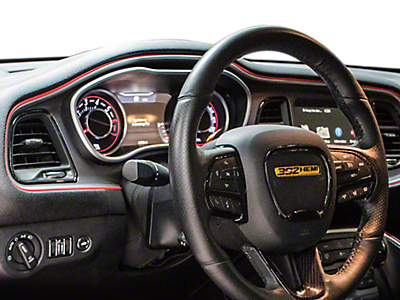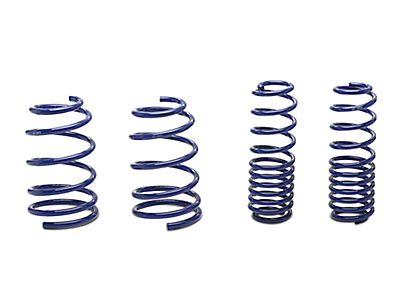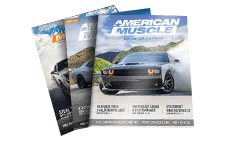2017 Dodge Challenger
The 2017 Dodge Challenger is a four-door muscle car with a bewildering array of trim levels, sub-trims, and customization options. The base Challenger engine is a 3.6-liter V6 with 305 horsepower and 268 pound-feet of torque and is available in the base SXT. Stepping up to the Challenger R/T gets you a 5.7-liter V8 with 372 horsepower and 400 pound-feet of torque (with the automatic gearbox) and 375 horsepower and 410 pound-feet of torque with a TREMEC six-speed manual transmission. The Challenger R/T Scat Pack has a 6.4-liter V8 engine with 485 horsepower and 475 pound-feet of torque, while the range-topping SRT Hellcat gets a supercharged 6.2-liter V8 pumping out 707 horsepower and a bewildering 650 pound-feet of torque.
Pump Up the Volume
Make your 2017 Dodge Challenger sing louder with a performance exhaust system. The primary upgrade is an axle-back exhaust with less-restrictive muffler designs and larger exhaust tips to unleash a hardcore muscle car sound. But since muscle cars are all about performance, your Dodge Challenger will go well with a performance cat-back exhaust system. Unlike axle-backs, cat-backs replace everything from the catalytic converters and back with larger-diameter stainless steel piping, straight-through mufflers, mandrel-bent mid-pipes, and massive exhaust tips. The result is a barrel-chested exhaust sound during start-ups and an exhilarating exhaust bark as the revs climb. But more than just improving the sound, upgrading the exhaust is an easy way to release more power and torque from your Challenger’s V6 or V8 engine, giving your muscle car spirited acceleration and a relentless feed of torque on the highway.
Supercharged Muscle
Fancy a supercharged 5.7-liter V8 in your 2017 Dodge Challenger? If you’re looking past an exhaust upgrade, consider a supercharger kit. Installing a Stage 1 supercharger upgrade will unleash up to an additional 40% of horsepower and torque. Running in the 6-8 psi, both centrifugal and twin-screw superchargers are made to fit 2017 Challengers. A centrifugal kit is less expensive to purchase but more difficult to fit, as it requires additional brackets and intake piping to make work. These superchargers are linear in production, meaning their boost output increases in conjunction with engine RPM. A twin-screw blower sits right on top of the engine and has a specialty manifold incorporated into the bottom of it, making it more compact. Also run off the crank pulley, twin screw superchargers are always providing maximum boost, making the extra power available at all RPM. However, their added complexity with the integrated intake manifold makes them more expensive to purchase.
Maximized Valvetrain
Supercharger kits go well with upgraded camshafts that are more capable of handling elevated boost pressures inside the engine. Additionally, Stage 1 & 2 supercharger camshafts (with hydraulic roller arms) allow for smoother and safer engine operation across the entire RPM range (less risk of detonation). The boost specific design of the cam lobe changes the ramp rate, lift and valve duration - unleashing more power and torque as the revs go higher - working in conjunction with the increased oxygen and pressure demand supplied by a supercharger. In addition, installing a throttle body upgrade in your 5.7-liter or 6.1-liter Hemi V8 will further increase the airflow to add 12 to 15 more horsepower. There is no shortage of engine upgrades for the 2017 Dodge Challenger. The question is, how much power can you really handle?


















